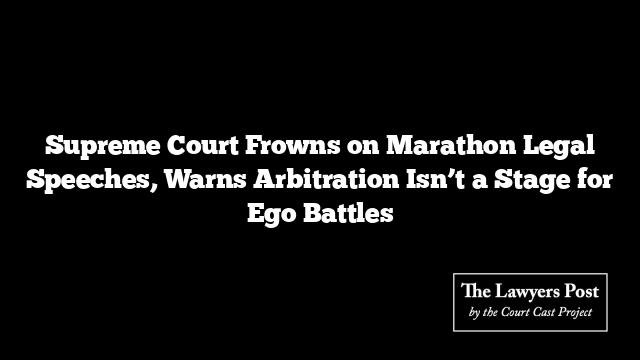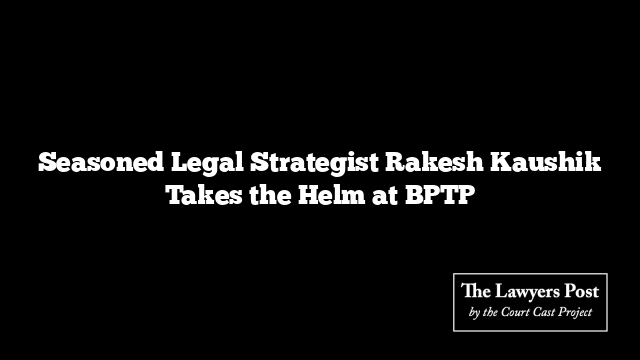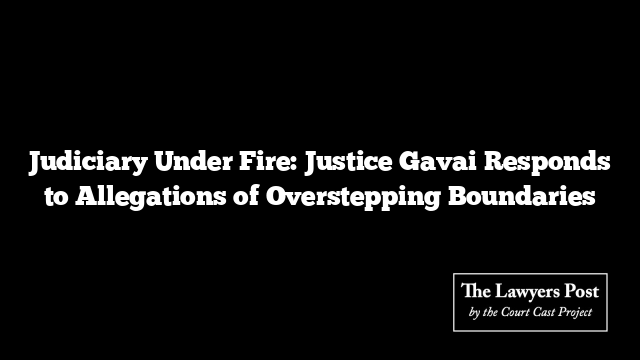In a courtroom clash that began with bricks and blueprints but ended in a sharp critique of legal showmanship, the Supreme Court has delivered a clear message to senior counsel across the country: keep it concise, especially in arbitration appeals.
The top court, while dealing with a long-winded battle between Larsen & Toubro (L&T) and Puri Constructions, used the moment to spotlight a larger dysfunction—how arbitration hearings have begun to mimic full-blown civil trials, complete with marathon arguments and mountains of citations.
The Bench, comprising Justices Abhay S. Oka and Pankaj Mithal, echoed frustrations previously voiced by the Delhi High Court. “Senior advocates treat arbitration appeals as if they’re arguing regular civil appeals under Section 96. That’s not what these proceedings are designed for,” the judges observed, adding that this trend not only clogs the system but also draws unnecessary criticism toward arbitration as a dispute resolution mechanism.
The criticism came as the justices dismissed a case that had been dragging on since a 1998 agreement between L&T and PCL. What started as a development deal for a group housing project in Haryana spiraled into a contractual quagmire—filled with breached clauses, unfulfilled guarantees, and allegations of coercion.
The Dispute: A Blueprint for Breakdown
The two firms had entered into a deal in 1998, supplemented by more agreements in 1999-2000 to manage financing gaps and regulatory hurdles. PCL pulled the plug in December 2000, citing L&T’s failure to pay External Development Charges (EDC) and adhere to construction schedules.
An arbitral tribunal later confirmed L&T had abandoned the project, shirked on EDC, and even exerted pressure on PCL to sign supplementary terms under economic duress. The tribunal awarded PCL over ₹115 crore in damages and injunctive relief against L&T.
But the High Court, in 2015, trimmed the award significantly, upholding the findings of breach and coercion while rejecting the monetary compensation due to lack of evidentiary backing—particularly since the damages were calculated using L&T’s own profit projections.
Supreme Court: Breach Proven, But Damages Don’t Add Up
The apex court concurred that L&T had breached the agreement by failing to pay dues and abandoning the project. The supplementary agreement, the court held, never really took off—calling it a “non-starter” since L&T ignored core preconditions, such as replacing bank guarantees and settling debts with Lord Krishna Bank.
On coercion, the court upheld the tribunal’s conclusion that PCL was forced into subsequent agreements due to L&T’s conduct. The judges referenced Section 16(3) of the Indian Contract Act, finding no illegality in the conclusions drawn by the tribunal and the High Court.
However, the ₹35 crore damages? Tossed. The ₹75 crore for unfulfilled title deeds? Also out. The court pointed out that PCL failed to prove its losses, and the tribunal had relied more on assumption than substance.
“Damages awarded without proper evidence violate Section 73 of the Contract Act. This finding can’t be shaken,” the court declared.
No Redos, Just a Reset
The Supreme Court made it clear that courts cannot remand cases back to arbitration for a fresh round of number crunching. But it left the door open for PCL to pursue other legal avenues to claim damages.
Beyond This Case: A Wake-Up Call for Arbitration Practice
While the core issue centered on a failed real estate venture, the larger message was directed squarely at the legal fraternity.
“Just because the stakes are high doesn’t mean arguments should become theatrical or submissions should come in volumes,” the court stated. “This isn’t just about one case—it’s about ensuring courts have time to address matters affecting ordinary citizens.”
The bench hinted at institutional changes, calling for formal time limits in arbitration-related oral submissions—an idea that could reshape how high-stakes commercial disputes are argued going forward.
The underlying warning was unmistakable: senior advocates might want to trade their courtroom marathons for sprints, or risk losing the very purpose of arbitration—efficient, fair, and focused resolution.





